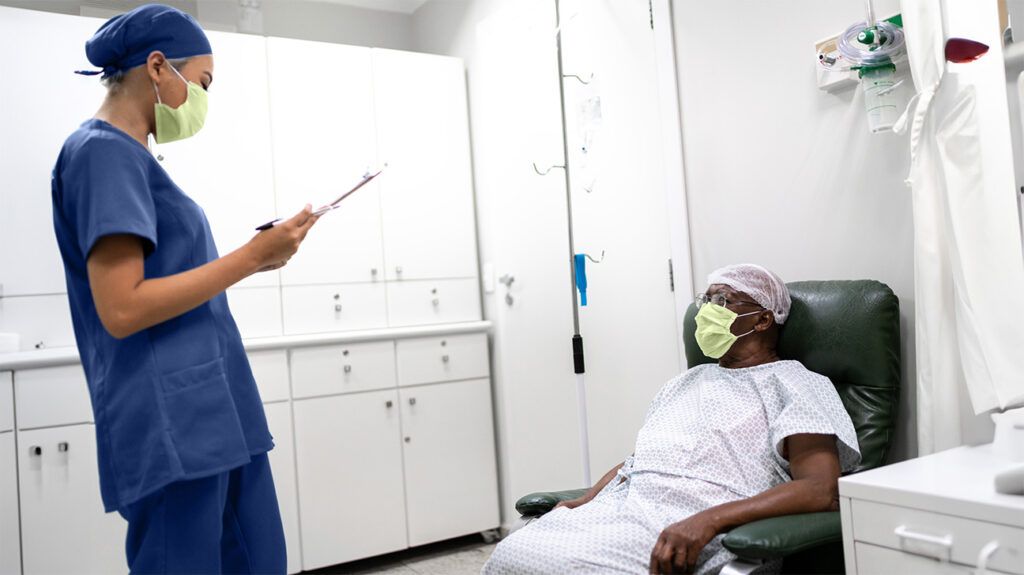Methicillin-resistant Staphylococcus epidermidis (MRSE) is a drug-resistant form of staph bacteria. MRSE infections may be difficult to treat due to their resistance to methicillin and other common antibiotics.
MRSE is different from methicillin-resistant Staphylococcus aureus (MRSA). They are both staph bacteria that can cause infections resistant to several antibiotics, but they are different species of these bacteria.
Due to MRSE’s resistance to several antibiotics, some healthcare professionals may also refer to it as multi-drug resistant Staphylococcus epidermidis.
Treatment typically involves alternative antibiotic therapy.
This article aims to provide a comprehensive overview of MRSE, covering its definition, symptoms, causes, diagnosis, and treatment.

MRSE refers to a species of staph bacteria that is
Older studies cited in a 2020 study indicated that methicillin resistance is present in
Given this, S. epidermidis can result in infections that are difficult to treat with antibiotics.
The S. epidermidis bacterium is
Although typically harmless, these bacteria can enter the body via an opening in the skin, such as a surgical wound or the site of an implanted medical device. Once in the bloodstream, MRSE
Symptoms of MRSE infections can vary depending on the cause. They can
Some symptoms a person may experience include:
- boils, abscesses, or blisters on the skin
- discoloration and warmth of the skin
- swelling
- nausea
- headaches
- pain in the affected area
In severe cases, a person may start demonstrating signs of sepsis, such as a fever and low blood pressure.
Several factors may contribute to a person developing an MRSE infection.
MRSE infection is among the
- cardiac devices, such as a pacemaker
- prosthetic heart valves
- catheters
- prosthetic joints
Research also suggests that this type of infection accounts for
S. epidermis has become methicillin-resistant due to the bacteria adapting and mutating. Reasons for why this may occur
- altering or reducing the way the antibiotic enters it
- finding methods of removing the antibiotic after it enters the bacteria
- changing or destroying the antibiotic using proteins and enzymes
- altering the component of the bacteria that the antibiotic targets
- bypassing the effects of the antibiotic by developing new cell processes
Antibiotic-resistant bacteria may also be able to share these resistance mechanisms with other bacteria that have not been exposed to antibiotic medications.
Diagnosis of MRSE usually begins with a medical history assessment and physical examination.
If a healthcare professional suspects MRSE, they
Once the laboratory technicians identify the bacteria, they
To identify antibiotic susceptibility, lab technicians
These systems
Treatment of MRSE will typically involve using antibiotics that the infection is not resistant to. Some tests that lab technicians perform during diagnosis can help determine which antibiotics may work against the infection.
For example, vancomycin is a type of antibiotic that a doctor
However, in some cases, a doctor may administer a different type of antibiotic. The type of antibiotic will depend on several factors, including:
- how the body responds to a specific antibiotic
- how resistant the bacterium is
- the kidney and liver function of the person experiencing the infection
- a person’s blood count results
- which other medications a person is taking, to avoid drug interactions
If the infection is due to a medical device, healthcare professionals will undertake an assessment to consider whether to remove the device.
MRSE is a strain of staph bacteria that is resistant to certain antibiotics, such as methicillin. This resistance can make it difficult to treat infections involving this bacterium.
People most at risk of developing an MRSE infection are typically those with an implanted medical device, such as a prosthetic joint or heart valve. The bacteria can enter the body through an opening in the skin and cause an infection in the bloodstream.
Diagnosis involves laboratory testing to identify the specific strain and its antibiotic resistance. Treatment options rely on alternative antibiotics that will have an effect on the strain of MRSE.
